Inulin Market Size
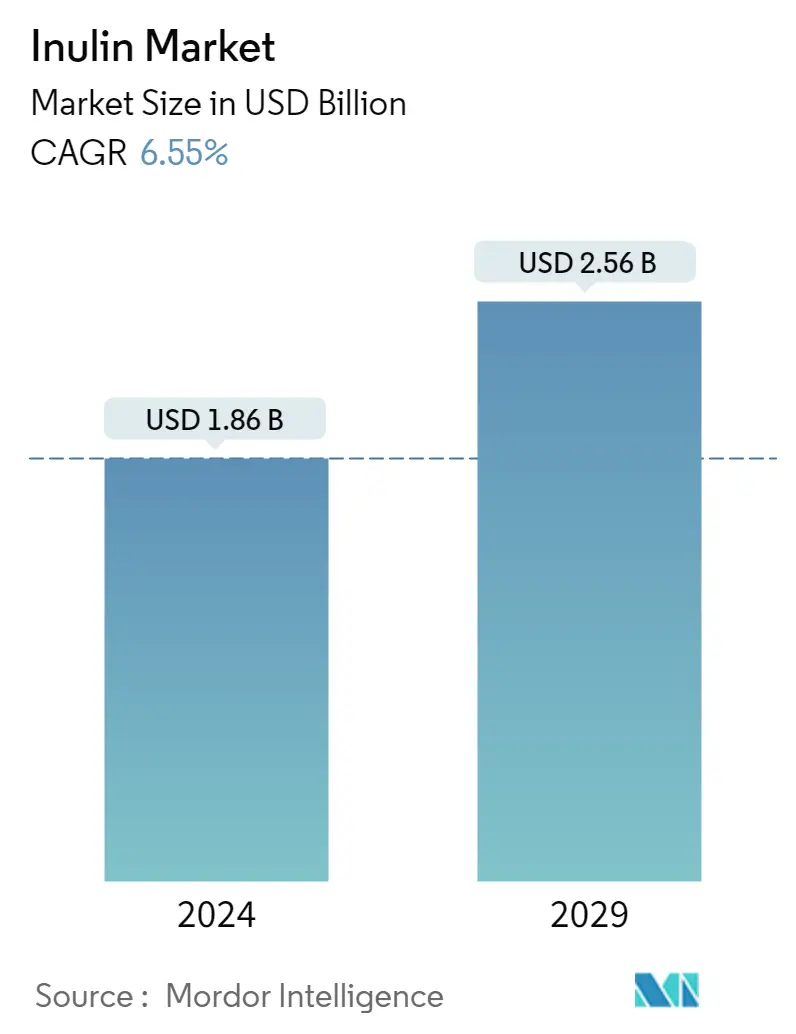
| Study Period | 2019 - 2029 |
| Market Size (2024) | USD 1.86 Billion |
| Market Size (2029) | USD 2.56 Billion |
| CAGR (2024 - 2029) | 6.55 % |
| Fastest Growing Market | Asia-Pacific |
| Largest Market | Europe |
Major Players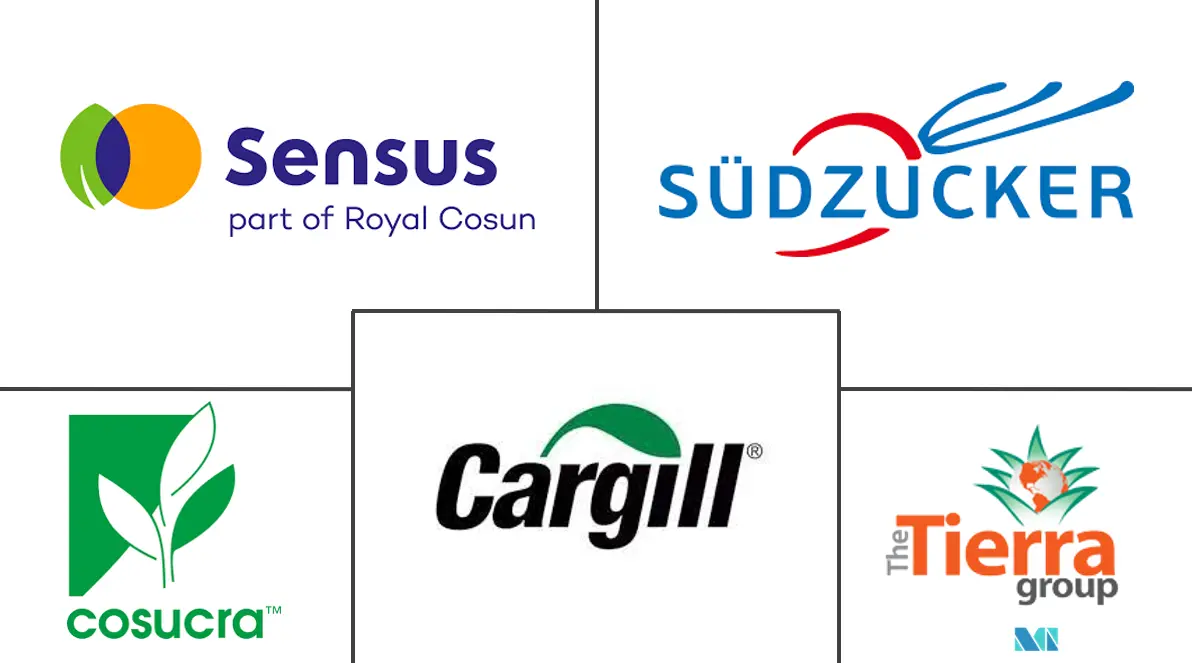
*Disclaimer: Major Players sorted in no particular order |
Inulin Market Analysis
The Inulin Market size is estimated at USD 1.86 billion in 2024, and is expected to reach USD 2.56 billion by 2029, growing at a CAGR of 6.55% during the forecast period (2024-2029).
- The global inulin market is poised to experience significant growth in the coming years, driven by the rising adoption of prebiotic ingredients in the dairy industry and the formulation of various dairy products. Furthermore, the increasing health awareness among consumers has led to a surge in demand for nutraceuticals, thereby boosting the demand for inulin. Inulin fiber has been found to aid in reducing obesity, diabetes, and cholesterol levels, leading to a growing demand for dietary fibers in nutraceutical products.
- The prevalence of digestive disorders such as pain, cramps, constipation, and bloating has been rising globally, leading to a surge in demand for fiber-rich and prebiotic-rich food and beverage products. The increasing geriatric population worldwide has also fueled the demand for healthy food. According to the United Nations Department of Economic & Social Affairs, the share of older persons in the global population is projected to increase from 9.3% in 2020 to 16.3% in 2050.
- Inulin has also gained popularity as a natural sugar replacer, with its presence enabling companies to label their products as having enhanced fiber content. Plant-based products have become a significant category for health-conscious consumers, driving the demand for chicory inulin. Key players in the global inulin market are focusing on launching innovative products and expanding production facilities to maintain their market dominance.
Inulin Market Trends
Growing Consumers’ Interest in Prebiotics
- Inulin is a prebiotic that has gained popularity among consumers globally due to the growing awareness of the importance of gut health. The increasing consumption of prebiotics, such as inulin, has been driven by consumers' desire for improved digestion, lower stress response, better hormonal balance, and a decrease in cardiovascular diseases. As a result, manufacturers are showing interest in functional ingredients like inulin to manufacture functional health supplements, food and beverage products, and others.
- In addition to its widespread use in adult products, inulin is increasingly used in infant formula or milk to improve the intestinal microflora of babies and small children. The neutral taste of inulin ensures that it does not affect the original taste of the product, making it an ideal ingredient for infant and young children's nutrition.
- Manufacturers are capitalizing on this growing interest by introducing innovative products such as Beneo Orafti Synergy1 inulin, an oligofructose-enriched inulin formula for infants with positive prebiotic effects on newborns and can potentially address neonate nutrition.
- The demand for prebiotics, such as inulin, has also increased due to their use in a wide variety of applications in the food and beverage industry, including sweetening agents and texture enhancement. The increasing demand for products and dietary supplements with functional benefits among consumers globally, coupled with the rising concern toward obesity, irritable bowel syndrome, gastric ulcer, and other health issues, is driving the market for prebiotics, including inulin. As a result, inulin's demand is expected to continue to grow as consumers prioritize their gut health and seek products that offer functional health benefits.
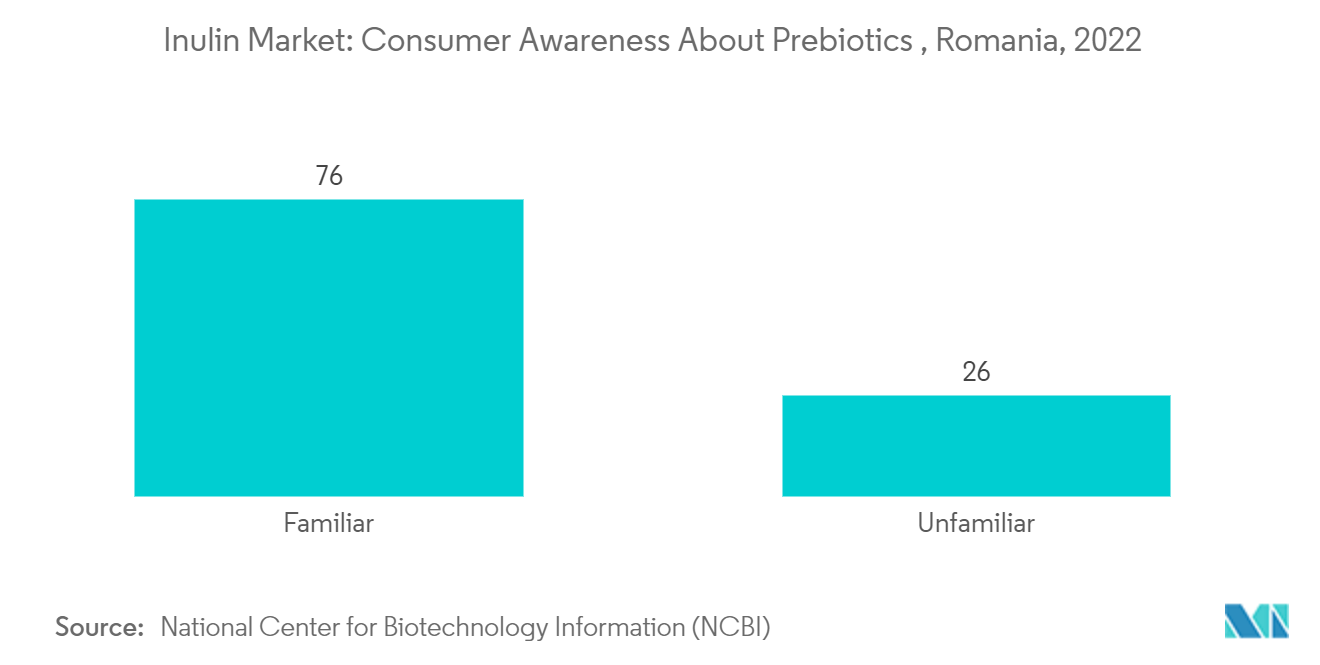
Europe Holds the Significant Share in the Market
- The Europe inulin market is primarily driven by the widespread use of inulin in the food and beverage sector as a healthy substitute for fat and sugar. In the United Kingdom, the demand for fortifying food with prebiotic ingredients is expected to fuel market expansion, as the country has seen increased sales of final bakery, dairy, and meat products over the years.
- According to Agriculture and Agri-Food Canada, the United Kingdom was the second-largest global market for baked goods in 2020, with imports valued at USD 2.9 billion. Additionally, from January 2016 to August 31, 2021, 8,751 new bakery products were launched in the United Kingdom, further validating the potential for market growth in the country.
- France is also a significant organic food and drinks market in Europe, with increasing demand for natural ingredients and alternative sweeteners over the last decade, especially from the food industry. This trend is expected to aid the growth of the inulin market in the country.
- In the German market, inulin is being used as an alternative to sucrose in the development of sugar-reduced chocolate products. Combined with bulking agents and high-intensity sweeteners, inulin can produce tasty and no-added-sugar chocolates, driving its use in the country. Moreover, a full sugar replacement with inulin and isomalt allows manufacturers to make a 'no added sugar' claim under the European Union labeling regulations. With more than 6.19 million diabetic adults in Germany, as reported by the International Diabetes Federation in February 2022, the demand for inulin is expected to grow in the country, given its potential as a sugar substitute.
- In Spain, rising awareness about the health benefits of inulin and an aging population are expected to boost the inulin market, particularly in the food and beverage and dietary supplement applications, where the product aids digestion and bowel movement. This presents an opportunity for inulin manufacturers in the country to increase their production capabilities.
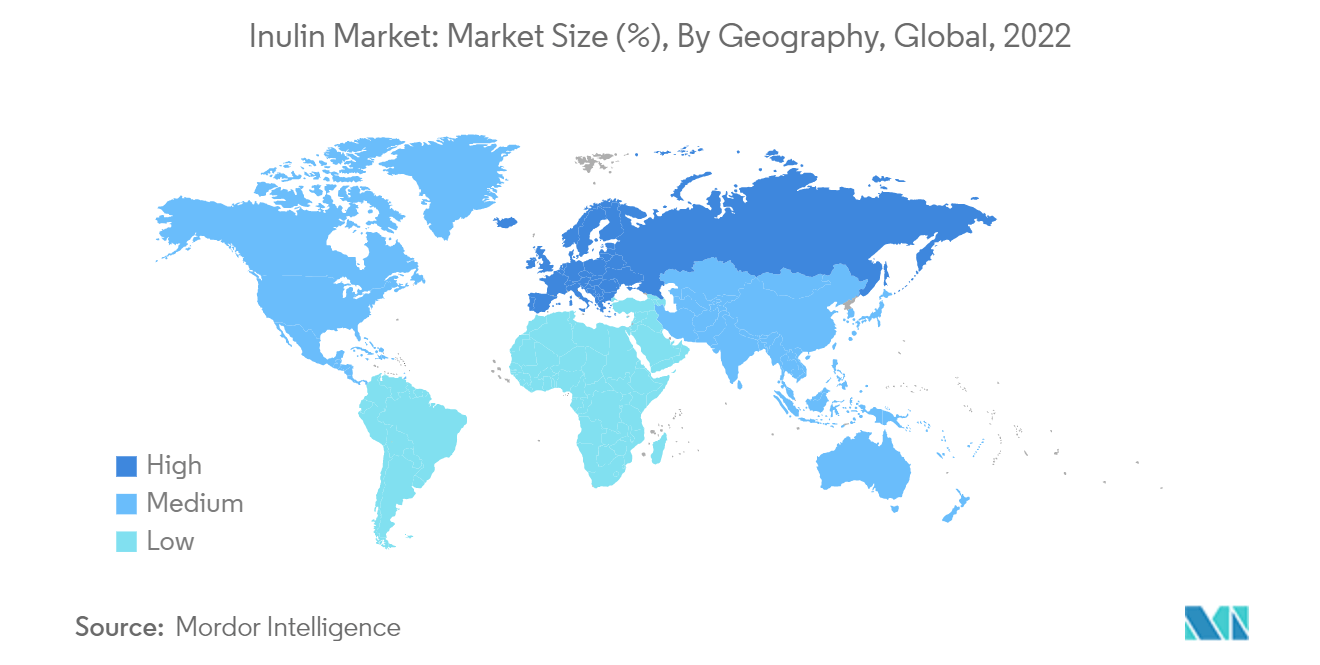
Inulin Industry Overview
The inulin market is characterized by intense competition from both local and international players, including Cargill Inc., Südzucker AG (Beneo Remy NV), Sensus NV, Cosucra Groupe Warcoing SA, and The Tierra Group. These key players are aggressively expanding their market presence and launching new products to capture a larger market share, improve their efficiency, and gain a competitive advantage over their rivals.
As the demand for inulin continues to rise, these companies are employing various strategies to expand their market share globally. The leading players' experience and expertise in the global inulin segment enable them to focus on developing new products that meet evolving customer needs. Furthermore, their economies of scale and high brand loyalty among customers provide them with an upper hand over their competitors.
Inulin Market Leaders
-
Cargill Inc.
-
Südzucker AG (Beneo Remy NV)
-
Sensus NV
-
Cosucra Groupe Warcoing SA
-
The Tierra Group
*Disclaimer: Major Players sorted in no particular order
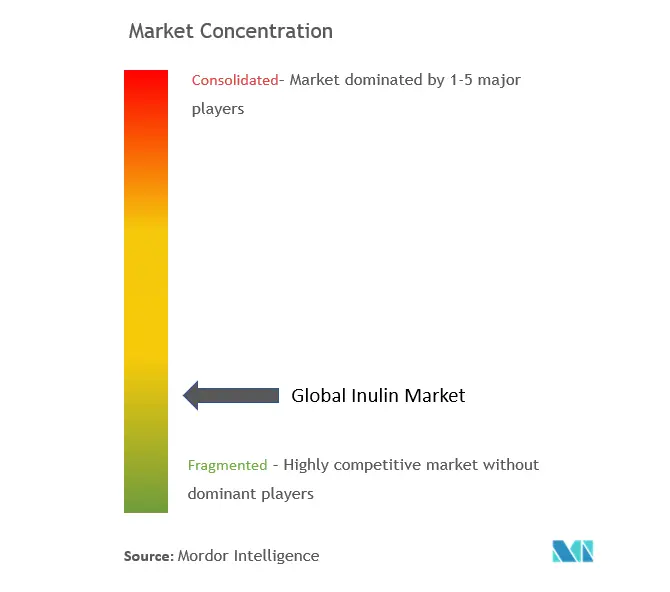
Inulin Market News
- March 2022: Sensus, a Dutch co-op member, announced its plans to expand the production of chicory root fiber (inulin) to meet the growing demand for natural prebiotics in plant-based foods and supplements.
- December 2021: Beneo, a functional ingredient manufacturer, invested EUR 30 million (USD 33.9 million) in expanding its capacity for producing prebiotic chicory fiber roots in Chile and Belgium. The expansion would increase the production of chicory root fiber inulin by over 40% to meet customer demand and promote the growth of the inulin market.
- March 2020: AgranaStarke GmbH, a subsidiary of Südzucker AG, acquired Marroquin Organic International Inc., a trading company specializing in organic products that serve B2B customers. AgranaStarke purchased a significant portion of its product portfolio from Marroquin Organic International Inc.
Inulin Market Report - Table of Contents
1. INTRODUCTION
- 1.1 Study Assumption and Study Deliverables
- 1.2 Scope of the Study
2. RESEARCH METHODOLOGY
3. EXECUTIVE SUMMARY
4. MARKET DYNAMICS
- 4.1 Market Drivers
- 4.2 Market Restraints
-
4.3 Industry Attractiveness - Porter's Five Forces Analysis
- 4.3.1 Bargaining Power of Suppliers
- 4.3.2 Bargaining Power of Consumers
- 4.3.3 Threat of New Entrants
- 4.3.4 Threat of Substitute Products
- 4.3.5 Degree of Competition
5. MARKET SEGMENTATION
-
5.1 Application
- 5.1.1 Food and Beverage
- 5.1.1.1 Bakery and Confectionery
- 5.1.1.2 Dairy Products
- 5.1.1.3 Meat Products
- 5.1.1.4 Beverage
- 5.1.1.5 Other Foods and Beverages
- 5.1.2 Dietary Supplements
- 5.1.3 Pharmaceuticals
-
5.2 Geography
- 5.2.1 North America
- 5.2.1.1 United States
- 5.2.1.2 Canada
- 5.2.1.3 Mexico
- 5.2.1.4 Rest of North America
- 5.2.2 Europe
- 5.2.2.1 United Kindgom
- 5.2.2.2 France
- 5.2.2.3 Germany
- 5.2.2.4 Spain
- 5.2.2.5 Rest of Europe
- 5.2.3 Asia-Pacific
- 5.2.3.1 China
- 5.2.3.2 Japan
- 5.2.3.3 Australia
- 5.2.3.4 India
- 5.2.3.5 Rest of Asia-Pacific
- 5.2.4 South America
- 5.2.4.1 Brazil
- 5.2.4.2 Argentina
- 5.2.4.3 Rest of South America
- 5.2.5 Middle-East and Africa
- 5.2.5.1 South Africa
- 5.2.5.2 Saudi Arabia
- 5.2.5.3 Rest of Middle-East and Africa
6. COMPETITIVE LANDSCAPE
- 6.1 Strategies Adopted by Key Players
- 6.2 Market Share Analysis
-
6.3 Company Profiles
- 6.3.1 Cargill Inc.
- 6.3.2 Sudzucker AG (Beneo Remy NV)
- 6.3.3 Sensus NV
- 6.3.4 Cosucra Groupe Warcoing SA
- 6.3.5 The Ingredient House (TIH)
- 6.3.6 The Tierra Group
- 6.3.7 Nova Green Inc.
- 6.3.8 Adept Impex Private Limited
- 6.3.9 Ciranda Inc.
- 6.3.10 The Green Labs LLC
- *List Not Exhaustive
7. MARKET OPPORTUNITIES AND FUTURE TRENDS
** Subject To AvailablityInulin Industry Segmentation
Inulin is a naturally occurring, non-absorbable, and indigestible oligosaccharide found in the roots or tubers of various plants such as Jerusalem artichoke or chicory. It stimulates the growth of beneficial bacteria in the gut, including Lactobacilli and Bifidobacteria, thereby modulating the microflora composition.
The inulin market is segmented by application and geography. By application, the market is segmented into food and beverage, dietary supplements, and pharmaceuticals. Food and beverage are further segmented into bakery and confectionery, dairy products, meat products, beverages, and other foods and beverages. By geography, the market is segmented into North America, Europe, Asia-Pacific, South America, and Middle-East and Africa.
For each segment, the market sizing and forecasts have been done on the basis of value (in USD million).
| Application | Food and Beverage | Bakery and Confectionery |
| Dairy Products | ||
| Meat Products | ||
| Beverage | ||
| Other Foods and Beverages | ||
| Application | Dietary Supplements | |
| Pharmaceuticals | ||
| Geography | North America | United States |
| Canada | ||
| Mexico | ||
| Rest of North America | ||
| Geography | Europe | United Kindgom |
| France | ||
| Germany | ||
| Spain | ||
| Rest of Europe | ||
| Geography | Asia-Pacific | China |
| Japan | ||
| Australia | ||
| India | ||
| Rest of Asia-Pacific | ||
| Geography | South America | Brazil |
| Argentina | ||
| Rest of South America | ||
| Geography | Middle-East and Africa | South Africa |
| Saudi Arabia | ||
| Rest of Middle-East and Africa |
Inulin Market Research FAQs
How big is the Inulin Market?
The Inulin Market size is expected to reach USD 1.86 billion in 2024 and grow at a CAGR of 6.55% to reach USD 2.56 billion by 2029.
What is the current Inulin Market size?
In 2024, the Inulin Market size is expected to reach USD 1.86 billion.
Who are the key players in Inulin Market?
Cargill Inc., Südzucker AG (Beneo Remy NV), Sensus NV, Cosucra Groupe Warcoing SA and The Tierra Group are the major companies operating in the Inulin Market.
Which is the fastest growing region in Inulin Market?
Asia-Pacific is estimated to grow at the highest CAGR over the forecast period (2024-2029).
Which region has the biggest share in Inulin Market?
In 2024, the Europe accounts for the largest market share in Inulin Market.
What years does this Inulin Market cover, and what was the market size in 2023?
In 2023, the Inulin Market size was estimated at USD 1.75 billion. The report covers the Inulin Market historical market size for years: 2019, 2020, 2021, 2022 and 2023. The report also forecasts the Inulin Market size for years: 2024, 2025, 2026, 2027, 2028 and 2029.
Inulin Industry Report
Statistics for the 2024 Inulin market share, size and revenue growth rate, created by Mordor Intelligence™ Industry Reports. Inulin analysis includes a market forecast outlook to 2029 and historical overview. Get a sample of this industry analysis as a free report PDF download.



